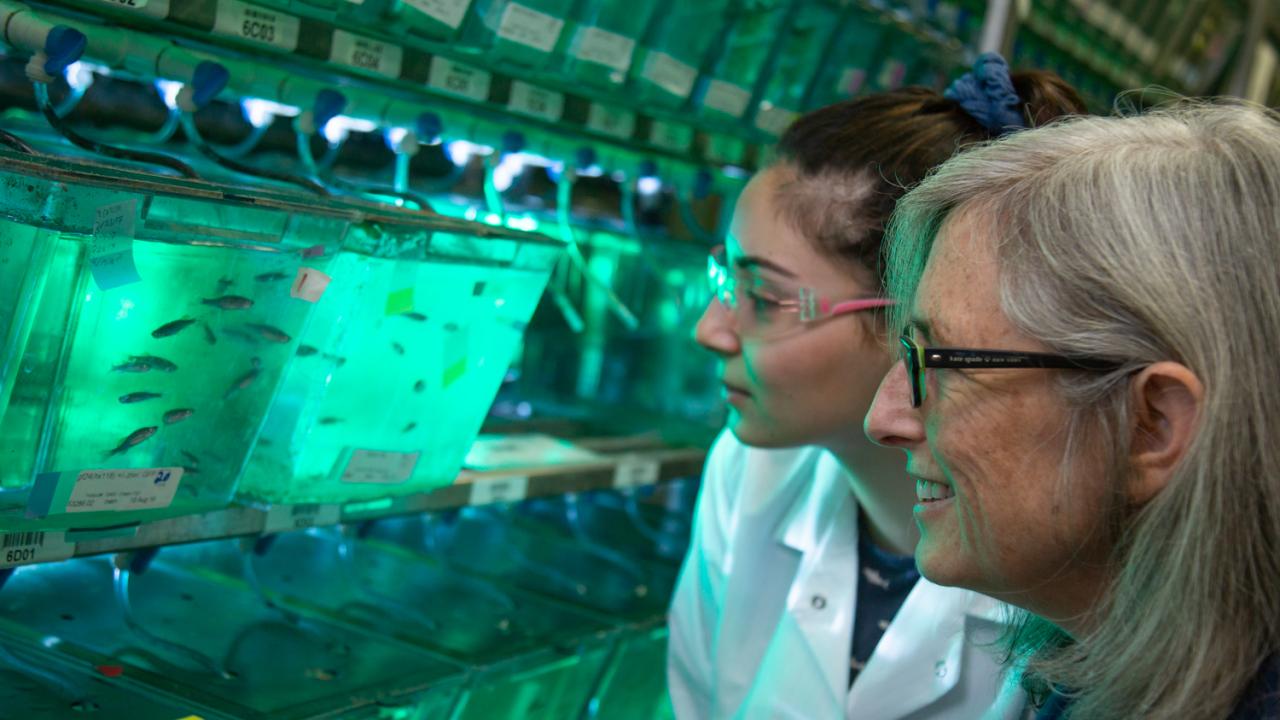
From Yeast to Zebrafish, New Insight on Birth Defects and Miscarriage
Quick Summary
- A study shows that mutations to a gene called spo11 lead to infertility and developmental problems in zebrafish
- The mutation prevented chromosomes from properly separating during cell division
- In humans, such missegregation can lead to disabilities, such as Down syndrome
When it comes to reproductive biology, meiosis, the process responsible for sex cell division, is essential in all nucleus-based cell life. In humans, plants, mice, fish, worms and even yeast, primordial sex cells use meiosis to proliferate.
Since her postdoctoral training, Professor Sean Burgess, Department of Molecular and Cellular Biology, has investigated the choreography of the chromosome-based events of meiosis using yeast as a model organism.
“I really appreciated the power of yeast and yeast genetics for the breadth of experiments you can do,” said Burgess.
Despite its versatility, there are some natural phenomena associated with reproduction that Burgess can’t investigate with yeast, like the differences between the production of eggs and sperm.
Partnering with Associate Professor Bruce Draper in the Department of Molecular and Cellular Biology, Burgess started using zebrafish, Danio rerio, to investigate these meiosis events. In a study appearing in PLOS Genetics, Burgess, Draper and their colleagues highlight how mutations in a gene called spo11 can lead to zebrafish males that are infertile and females that produce offspring with developmental problems.
They found that mutating spo11 prevented chromosomes from properly separating during cell division. In humans, such missegregation can lead to disabilities, such as Down syndrome.
“It also turns out that the leading cause of miscarriages in humans is due to embryos or fetuses having the wrong number of chromosomes,” said Burgess.

The origin of collaboration
Burgess decided to study meiosis in zebrafish after attending seminars led by Draper. Part of Draper’s research concerns germline stem cells, which eventually become eggs and sperm. With zebrafish, researchers can visualize the meiosis process much more easily than with an organism like yeast, which has a tiny nucleus and even tinier chromosomes.

The researchers developed a method to visualize the chromosome using super-resolution microscopy at the UC Davis MCB Light Microscopy Imaging Facility.
For the study, Burgess and colleagues mutated the spo11 gene, known to be involved in homologous chromosome pairing in yeast. Knockout of the gene disrupted the chromosome pairing process, resulting in an incorrect number of chromosomes within the new egg cells.
“One of the most surprising discoveries was that the mutation in males and females gave really different reproductive outcomes,” said Burgess.
According to the study, males with this mutation didn’t produce any sperm. Females with the spo11 mutation were capable of producing fertile eggs, but the embryos that arose from them didn’t develop properly. For example, some didn’t develop tails.
“There’s something being disrupted that causes the meiotic program to halt in males,” said Burgess. “This is thought to be due to checkpoint proteins that monitor how a cell process is being carried out.”
The fish-human connection
The effects seen in zebrafish could hold implications for human reproduction and development. According to the Mayo Clinic, about 10 to 20 percent of pregnancies end in miscarriages, and most miscarriages, according to Burgess, occur due to missegregation of chromosomes.
“Usually, Down syndrome is consequence of eggs contributing an extra copy of chromosome 21 and not sperm,” said Burgess
Burgess will continue to use zebrafish as a model for studying reproductive biology. While the lead author of the paper, Yana Blokhina, recently graduated from UC Davis with Ph.D. in Genetics, two graduate students, Ivan Olaya and Masuda Sharifi, have signed on to continue this research.
“We’d like to understand why in some cases these mutants affect sperm production more than egg production,” said Burgess, noting that total sperm count has declined 50-60% among men in western countries since 1973.
While the causes of reduced fertility in humans are complex, Burgess argues that zebrafish could provide valuable insights into environmental, genetic and sex-specific effects on adverse meiotic outcomes. “We are primarily interested in basic science to understand the mechanisms that establish meiotic chromosome architecture during key transitions, but a direct link to human health is a big plus,” she said.
This work was funded by a grant from the National Institute of General Medical Sciences.

